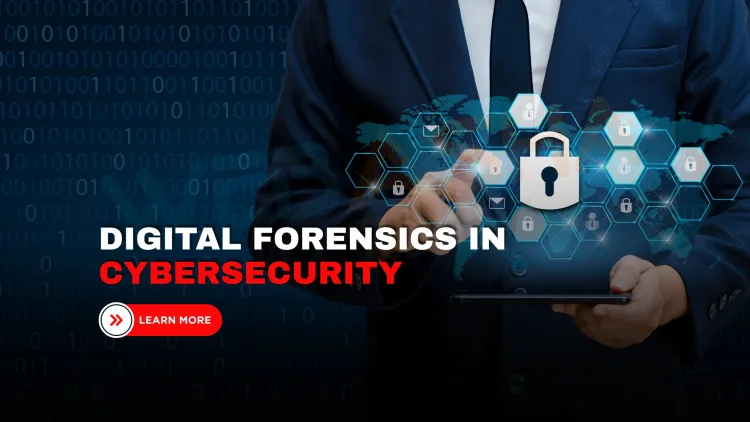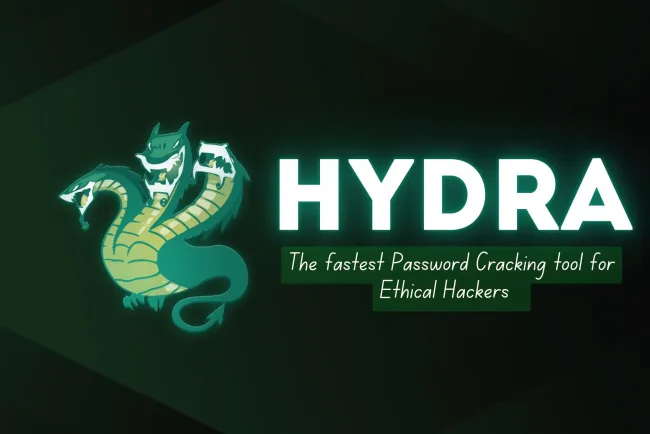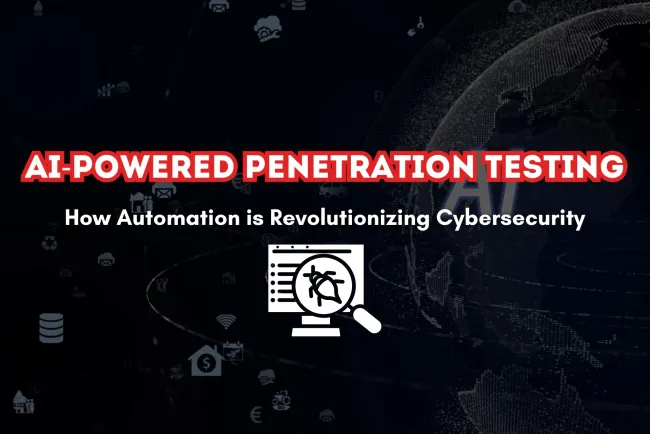What Is Digital Forensics in Information Security? Techniques, Tools, and Use Cases Explained
Learn how digital forensics enhances information security by detecting, analyzing, and preventing cybercrime. Discover essential tools, forensic techniques, and real-world applications that support incident response and data protection.

Table of Contents
- What Is a VPN Tunnel?
- How Digital Forensics Supports Information Security
- Key Phases of Digital Forensics
- Tools Used in Digital Forensics
- Common Use Cases of Digital Forensics
- Legal and Compliance Relevance
- Challenges in Digital Forensics
- Best Practices for Effective Digital Forensics
- The Future of Digital Forensics
- Conclusion
- Frequently Asked Questions (FAQs)
In today’s digital-first world, where cyberattacks are more frequent and sophisticated than ever, digital forensics has become an indispensable pillar of information security. Whether it’s tracking a data breach, investigating insider threats, or analyzing malware attacks, digital forensics helps organizations uncover the "who, what, when, where, and how" behind security incidents.
This blog dives deep into what digital forensics is, how it supports cybersecurity, and why it’s crucial in protecting data, systems, and digital infrastructure.
What is Digital Forensics?
Digital forensics is the process of identifying, preserving, analyzing, and presenting digital evidence from electronic devices. It's often used in legal contexts, cybercrime investigations, and corporate incident response.
It plays a critical role in uncovering the timeline and tactics behind cyberattacks, data leaks, fraud, or policy violations—ensuring accountability and helping prevent future incidents.
How Digital Forensics Supports Information Security
Digital forensics is not just about solving crimes—it's about proactive cybersecurity defense and risk management. Here's how it supports information security:
-
Incident response: Helps detect and respond to security breaches faster.
-
Threat intelligence: Identifies attack patterns, tools, and techniques used by cybercriminals.
-
Evidence collection: Secures legally admissible digital proof for prosecution or compliance.
-
System recovery: Assists in understanding and recovering from malware, ransomware, or system compromises.
-
Policy enforcement: Verifies internal compliance with security policies and data usage protocols.
Key Phases of Digital Forensics
Digital forensics follows a systematic methodology to ensure evidence integrity:
1. Identification
-
Locate potential digital evidence sources such as hard drives, logs, emails, or cloud data.
2. Preservation
-
Create forensic images of digital devices to prevent data alteration.
-
Maintain a chain of custody to ensure evidence can be used in court.
3. Analysis
-
Investigate file systems, memory dumps, metadata, browser history, and network traffic to uncover malicious activity or misuse.
4. Documentation
-
Record each action taken, along with findings, timestamps, and conclusions.
5. Presentation
-
Prepare detailed reports and possibly provide expert testimony in legal proceedings or internal reviews.
Tools Used in Digital Forensics
Here are some widely used digital forensic tools and their purposes:
| Tool | Purpose |
|---|---|
| Autopsy | Graphical interface for analyzing hard drives and smartphones. |
| FTK (Forensic Toolkit) | Comprehensive evidence processing and eDiscovery tool. |
| EnCase | Advanced disk imaging, keyword searching, and evidence collection. |
| Volatility | Memory analysis and malware investigation. |
| Wireshark | Packet capture and network traffic analysis. |
| X-Ways Forensics | Lightweight forensic analysis tool with scripting capabilities. |
Common Use Cases of Digital Forensics
-
Investigating data breaches
-
Tracing phishing attacks or social engineering
-
Analyzing malware payloads
-
Identifying insider threats
-
Recovering deleted files or encrypted data
-
Supporting legal cases with digital evidence
-
Verifying intellectual property theft
Legal and Compliance Relevance
Digital forensics is crucial for maintaining compliance with regulations such as:
-
GDPR (General Data Protection Regulation)
-
HIPAA (Health Insurance Portability and Accountability Act)
-
PCI-DSS (Payment Card Industry Data Security Standard)
-
SOX (Sarbanes-Oxley Act)
These laws require organizations to protect sensitive data and report breaches, which forensics helps validate and investigate.
Challenges in Digital Forensics
Despite its importance, digital forensics faces several obstacles:
-
Data volume: Modern systems generate enormous amounts of data.
-
Encryption: Encrypted files and communications are harder to analyze.
-
Cloud computing: Forensics in cloud environments requires cooperation with third-party providers.
-
Anti-forensic techniques: Attackers use tools to hide, delete, or manipulate evidence.
-
Legal complexities: Different jurisdictions have varying rules for evidence handling.
Best Practices for Effective Digital Forensics
-
Always maintain a secure chain of custody.
-
Use write blockers during evidence imaging to preserve integrity.
-
Document every action to ensure transparency and reproducibility.
-
Employ automated forensic tools to handle large-scale data.
-
Collaborate with legal, HR, and cybersecurity teams during investigations.
-
Keep analysts trained in the latest threats and forensic techniques.
The Future of Digital Forensics
With the rise of AI-based attacks, IoT, and edge computing, the scope of digital forensics is evolving:
-
AI and ML will speed up evidence analysis and anomaly detection.
-
Cloud-native forensics will become standard as more data moves off-premise.
-
IoT and smart device analysis will be crucial for connected home or industrial incidents.
-
Blockchain forensics will help trace cryptocurrency crimes and transactions.
Conclusion
In a world where data is currency and cybercrime is relentless, digital forensics offers the tools, techniques, and frameworks needed to detect breaches, collect evidence, and reinforce information security.
It’s not just about responding to attacks—it’s about building a culture of visibility, accountability, and resilience. Whether you’re a business, government, or security professional, investing in digital forensics is essential for staying ahead of modern threats.
FAQ
What is digital forensics in information security?
Digital forensics is the process of identifying, preserving, analyzing, and presenting digital evidence to support cybersecurity and legal investigations.
Why is digital forensics important in cybersecurity?
It helps detect the source of cyberattacks, understand the methods used, and gather legally admissible evidence for prosecution.
What are the main types of digital forensics?
The key types include computer forensics, mobile forensics, network forensics, cloud forensics, and memory forensics.
What is the role of digital forensics in incident response?
Digital forensics assists in identifying the root cause, attack timeline, and data affected during security incidents.
How does digital evidence get collected?
Digital evidence is collected using forensic tools that capture data without altering the original content, ensuring its integrity.
What tools are commonly used in digital forensics?
Popular tools include FTK, EnCase, Autopsy, Sleuth Kit, X-Ways Forensics, Volatility, and Magnet AXIOM.
What is chain of custody in digital forensics?
It is a documented process that tracks the control, transfer, and analysis of digital evidence from collection to court submission.
What is the first step in a digital forensic investigation?
The first step is evidence identification and securing the scene or device without altering any data.
How is malware analyzed in digital forensics?
Using static and dynamic analysis techniques to understand malware behavior, origin, and impact on systems.
What is the difference between digital forensics and cyber forensics?
They are often used interchangeably, but cyber forensics typically refers to internet-based evidence, while digital forensics covers all digital media.
How is network forensics conducted?
By capturing and analyzing network traffic to detect unauthorized access, data exfiltration, and suspicious activity.
What is volatile memory forensics?
It involves analyzing RAM (volatile memory) to recover sensitive data like passwords, encryption keys, and active processes.
Can deleted files be recovered through digital forensics?
Yes, forensic tools can often recover deleted or hidden files unless they are securely overwritten.
Is digital forensic evidence admissible in court?
Yes, if collected, preserved, and analyzed according to legal standards and protocols.
What is a forensic image?
A forensic image is an exact sector-by-sector replica of a storage device used for safe investigation without altering original data.
What certifications are best for digital forensics professionals?
Top certifications include GCFA, CHFI, EnCE, CFCE, and CCE.
What industries use digital forensics?
Industries such as finance, healthcare, law enforcement, defense, and cybersecurity regularly employ digital forensic techniques.
How long does a forensic investigation take?
It can range from hours to several weeks depending on the complexity and size of the data involved.
What are anti-forensic techniques?
These are methods attackers use to erase or obfuscate evidence, such as file wiping, encryption, and log tampering.
How is mobile forensics different from computer forensics?
Mobile forensics focuses on analyzing data from smartphones and tablets, including apps, SMS, GPS, and call logs.
What is metadata analysis in forensics?
It involves extracting hidden information like timestamps, authorship, and file modification history to support investigations.
How do cloud environments affect forensic investigations?
Cloud forensics presents challenges like remote data access, provider cooperation, and multi-tenant systems.
What is live forensics?
Live forensics involves analyzing systems while they are still running, especially to capture volatile data.
How does AI help in digital forensics?
AI automates evidence sorting, pattern recognition, anomaly detection, and speeds up large-scale investigations.
What are the legal challenges in digital forensics?
Issues include privacy laws, cross-border data access, and ensuring evidence is not tampered with or improperly handled.
What is timeline analysis in digital forensics?
It involves reconstructing events in chronological order to understand the sequence and impact of a security incident.
How are digital forensic reports structured?
They include objectives, tools used, methods, findings, timelines, and a conclusion for legal or business decision-making.
Can digital forensics detect insider threats?
Yes, by analyzing user behavior, access logs, and file movements to uncover unauthorized activities from within.
What are common sources of digital evidence?
Sources include hard drives, mobile devices, email servers, log files, network packets, and cloud storage platforms.
How can organizations prepare for forensic readiness?
By maintaining proper logging, using secure configurations, training staff, and having an incident response plan in place.














![Top 10 Ethical Hackers in the World [2025]](https://www.webasha.com/blog/uploads/images/202408/image_100x75_66c2f983c207b.webp)








